ROOT & HERBS

ELDERBERRY PLANTS
Elderberry is one of the most commonly used medicinal plants in the world. Traditionally, Native Americans used it to treat infections, while the ancient Egyptians used it to improve their complexions and heal burns. They are excellent general immune system booster, It's treat cold and flu, influenza,herpes virus, diabetes, natural cancer treatment, infections, sciatica, lower blood sugar, sinus infection, headaches, swelling, inflammation, to stimulate the production of urine and to induce sweating, dental pain, heart pain and nerve pain, as well as a laxative and diuretic.

ASTRAGALUS ROOT
Inhibits herpes simplex virus 1, arthritis, treat chronic asthma treat hepatitis by inhibiting hepatitis b virus cells in the liver, treat HIV by protecting t-helper cells fight the virus for much longer, reduce inflammation in diabetic kidney disease, heart disease, boosting the immune system, decreasing or eliminating tumors, treating liver cancer, treating and regulating type 1 and 2 diabetes, increase insulin sensitivity, protect pancreatic beta cells, improvement of the function of the brain, both of which could lengthen life span, in cases of severe chemotherapy symptoms like naused, vomiting, diarrhea and bone marrow suppression, treat common colds and the flu.

CARDAMOM ROOT
Remedy against halitosis or bad breath. Simply chewing on the seeds can help to eliminate any bad odors coming from your mouth, help prevent cavity development on your teeth or even reserve cavities and tooth decay, natural cancer treatment, helps lower blood pressure, which is key to maintaining the health of heart and kidneys, for diabetes and anyone struggling with blood sugar issues, for the treatment of digestive issues like stomach aches, helps in controlling gastrointestinal
disorders, such as: acidity, flatulence and stomach cramps, provide relief for people struggle with breathing issues like asthma

PARSLEY HERBS
Provides Beneficial Essential Oils That Fight Cancer, Help Fight Kidney Stones, Urinary Tract Infections and Gallbladder Infections, used to cure a number of gastrointestinal symptoms and disorders, including gas, constipation, bloating, indigestion and nausea, it helps to cure neural tube defects that can result when a folate
deficiency takes place
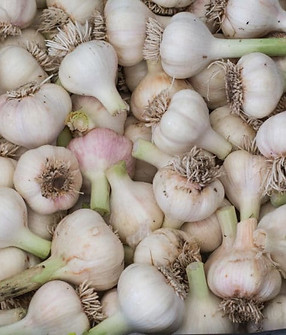
GARLIC
Garlic contains Compound with potent medicinal properties that treats herpes virus, coldsores, diabetes, natural cancer treatment, coldsores, infections, sciatica, lower blood sugar, Heart disease, kidneys,
Alzheimer's disease and
dementia, detoxify and boost immune system, treats cancer. alopecia (hair loss).

MARSHMALLOW ROOT
Treats Coughs, colds, sore throat, reduce pain, swelling and congestion, fights Bacterial Infections like tonsillitis, bronchitis, treating kidney stone, help treat certain digestive disorders, including leaky gut syndrome
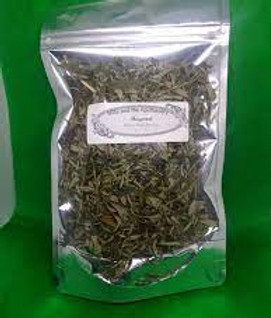
MUGWORT AND CLOVER HERBS
The plant's technical
title, Artemisia
vulgaris, comes from "Artemis," the name of a Greek moon goddess and considered to be a patron of women. Meanwhile, "vulgaris" ties back to the first of many of mugwort's uses that we'll be talking about: Historically, it was used as a herbal inhibitor for women's menstrual cycles and helped provide menopause relief. in some cases, mugwort was successful in a method called moxibustion, which used most notably for reversing the breach position of fetuses before birth and alleviating joint pain. The leaves of one species of the plant douglasiana, has been used as a preventative method before being exposed to poison oak, plus it's been used as a natural bug repellant. The plant contains high levels of antioxidants, which help to alleviate digestive and intestinal issues like ulcers, vomiting, nausea and constipation. It's even been known to elicit intense and vivid dreams. Components of mugwort are also being tested and studied as a possible alternative treatment for some cancers. Let's dive into more details and history behind all of the
benefits of mugwort.

ALOE VERA HERBS
skin conditions and wound healing management, including the treatment of psoriasis, dermatitis, oral mucositis, surgical wounds and as a home remedy for burn injuries. reduce the incidence of tumors by more than 90 percent in the liver, spleen and bone marrow. effectively treats genital herpes, frostbite. antifungal and antimicrobial agent, has antiviral and anti-inflammatory properties that accelerate healing and reduce pain associated with cold sores - or any sores on the mouth, treatment for dry hair or an itchy scalp,natural constipation relief remedy,helps digestion, normalizes acid/alkaline and pH balance, lessens yeast formation, encourages digestive bacteria and regularizes bowel processing, soothe and heal stomach ulcers, stimulates the immune system and kills infections.

LEMON BALM HERBS
a useful herbal remedy to help treat simplex and genital herpes, Effective herb to treat Hiv, provide relief for people struggle with breathing issues like Asthma, flatulence and upset stomach. It also speeds the healing of cold sores.
Services
Cure Different Types Of Human Infections And Diseases Using Natural Roots And Herbs. My major areas of concentration are Sexually transmitted infections (STI), also referred to as sexually transmitted diseases (STD) and venereal diseases (VD)" such as ;
-GENITAL & SIMPLEX HERPES...
-EPSTEIN-BARR VIRUS
-PREDIABETES/DIABETES/DIABETES MELLITUS...
- MENINGITIS...
-HIV...
- LEISHMANIASIS...
- LOW SPERM COUNT...
-SHIGELLA INFECTION...
-SYPHILLIS
-CANCER...
-LOWER RESPIRATORY INFECTION...
-STAPHYLOCOCCUS AUREUS...
-HEPATITIS...
-SHINGLES...
-YELLOW FEVER...
-POLIO...
- LUPUS...
-STROKE...
-FIBROID...
-EPILEPSY...
-TUBERCULOSIS..
LEUKAEMIA...
-SICKLE CELL...
-ASTHMA.. Etc..
NOTE: All my medications are made of purely
Traditional/English Natural Roots and Herb, Very Effective and Powerful so they are free from all adverse side effects. God has put healing cure in Roots and Herbs, They are Selected, Tested and trusted by National
Agency for Food And Drugs Agency

A VIRUS
Viruses are small particles of genetic material (either DNA or RNA) that are surrounded by a protein coat. Some viruses also have a fatty "envelope" covering. They are incapable of reproducing on their own. Viruses depend on the organisms they infect (hosts) for their very survival. Viruses get a bad rap, but they also perform many important functions for humans, plants, animals, and the environment. For example, some viruses protect the host against other infections. Viruses also participate in the process of evolution by transferring genes among different species. In biomedical research, scientists use viruses to insert new genes into cells. When most people hear the word "virus," they think of disease-causing (pathogenic) viruses such as the common cold, influenza, chickenpox, human immunodeficiency virus (HIV), and others. Viruses can affect many areas in the body, including the reproductive, respiratory, and gastrointestinal systems. They can also affect the liver, brain, and skin. Research reveals that that viruses are implicated in many cancers as well.

VIRAL INFECTION
A viral infection is a proliferation of a harmful virus inside the body. Viruses cannot reproduce without the assistance of a host. Viruses infect a host by introducing their genetic material into the cells and hijacking the cell's internal machinery to make more virus particles. With an active viral infection, a virus makes copies of itself and bursts the host cell (killing it) to set the newly-formed virus particles free. In other cases, virus particles "bud" off the host cell over a period of time before killing the host cell. Either way, new virus particles are then free to infect other cells. Symptoms of the viral illness occur as a result of cell damage, tissue destruction, and the associated immune response. Certain viruses - like the ones that cause chickenpox and cold sores may be inactive or
"latent" after the initial infection. For example, you may have a cold sore that erupts and then heals.
The cold sore virus remains in your cells in a dormant state. At a later date, a trigger, such as stress, sunlight, or something else, may reactivate the virus and lead to new symptoms. The virus makes more copies of itself, releases new virus particles, and kills more host cells.

RHEUMATOID ARTHRITIS
In rheumatoid arthritis, the body's immune system attacks the lining of the joint capsule, a tough membrane that encloses all the joint parts. This lining (synovial membrane) becomes inflamed and swollen. The disease process can eventually destroy cartilage and bone within the joint.
Risk factors for arthritis include:
* Family history. Some types of arthritis run in families, so you may be more likely to develop arthritis if your parents or siblings have the disorder. Your genes can make you more susceptible to environmental factors that may trigger arthritis.
* Age. The risk of many types of arthritis - including osteoarthritis, rheumatoid arthritis and gout - increases with age.
* Your sex. Women are more likely than men to develop rheumatoid arthritis, while most of the people who have gout, another type of arthritis, are men.
* Previous joint injury. People who have injured a joint, perhaps while playing a sport, are more likely to eventually develop arthritis in that joint.
* Obesity. Carrying excess pounds puts stress on joints, particularly your knees, hips and spine. People with obesity have a higher risk of developing arthritis

URINARY TRACT INFECTION
A urinary tract infection (UTI) is an infection in any part of your urinary system - your kidneys, ureters, bladder and urethra. Most infections involve the lower urinary tract - the bladder and the urethra.
Women are at greater risk of developing a UTI than are men. Infection limited to your bladder can be painful and annoying. However, serious consequences can occur if a UTI spreads to your kidneys.
Urinary tract infections don't always cause signs and symptoms, but when they do they may include:
* A strong, persistent urge to urinate
* A burning sensation when urinating
* Passing frequent, small amounts of urine
* Urine that appears cloudy
* Urine that appears red, bright pink or cola-colored - a sign of blood in the urine
* Strong-smelling urine
* Pelvic pain, in women - especially in the center of the pelvis and around the area of the pubic bone
UTIs may be overlooked or mistaken for other conditions in older adults.
The most common UTIs occur mainly in women and affect the bladder and urethra.
* Infection of the bladder (cystitis. This type of UTI is usually caused by Escherichia coli (E. coli), a type of bacteria commonly found in the gastrointestinal (GI) tract. However, sometimes other bacteria are
responsible. Sexual intercourse may lead to cystitis, but you don't have to be sexually active to develop it. All women are at risk of cystitis because of their anatomy - specifically, the short distance from the urethra to the anus and the urethral opening to the bladder.
* Infection of the urethra (urethritis. This type of UTI can occur when GI bacteria spread from the anus to the urethra. Also, because the female urethra is close to the vagina, sexually transmitted infections, such as herpes, gonorrhea, chlamydia and mycoplasma, can cause urethritis.

ASTHMA
Asthma is a condition in which your airways narrow and swell and produce extra mucus. This can make breathing difficult and trigger coughing, wheezing and shortness of breath. For some people, asthma is a minor nuisance. For others, it can be a major problem that interferes with daily activities and may lead to a life-threatening asthma attack.
Asthma symptoms vary from person to person. You may have infrequent asthma attacks, have symptoms only at certain times - such as when exercising - or have symptoms all the time.
Asthma signs and symptoms include:
* Shortness of breath
* Chest tightness or pain
* Trouble sleeping caused by shortness of breath, coughing or wheezing
* A whistling or wheezing sound when exhaling (wheezing is a common sign of asthma in children)
* Coughing or wheezing attacks that are worsened by a respiratory virus, such cold or the flu
Signs that your asthma is probably worsening include:
* Asthma signs and symptoms that are more frequent and bothersome
* Increasing difficulty breathing (measurable with a peak flow meter, a device used to check how well your lungs are working)
* The need to use a quick-relief inhaler more often
For some people, asthma signs and symptoms flare up in certain situations:
* Exercise-induced asthma, which may be worse when the air is cold and dry
* Occupational asthma, triggered by workplace irritants such as chemical fumes, gases or dust
* Allergy-induced asthma, triggered by airborne substances, such as pollen, mold spores, cockroach waste or particles of skin and dried saliva shed by pets (pet dander)
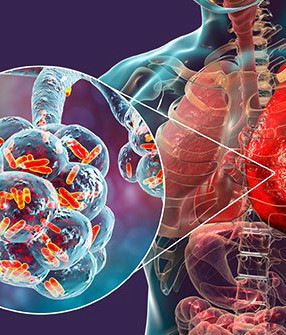
RESPIRATORY VIRAL
INFECTIONS
Respiratory viral infections affect the lungs, nose, and throat. These viruses are most commonly spread by inhaling droplets containing virus particles.
Examples include:
* Rhinovirus is the virus that most often
causes the common cold, but there are more
than 200 different viruses that can cause
colds. Cold symptoms like coughing, sneezing, mild headache, and sore throat typically last for up to 2 weeks.
* Seasonal influenza is an illness that affects about 5% to 20% of the population in the US every year. More than 200,000 people per year are hospitalized annually in the US due to complications of the flu. Flu symptoms are more severe than cold symptoms and often include body aches and severe fatigue. The flu also tends to come on more suddenly than a cold.
Respiratory Syncytial Virus (RSV) is an infection that can cause both upper respiratory infections (like colds) and lower respiratory infections (like pneumonia and bronchiolitis). It can be very severe in infants, small children, and elderly adults.
Frequent hand-washing, covering the nose and mouth when coughing or sneezing, and avoiding contact with infected individuals can all reduce the
spread of respiratory infections. Disinfecting hard surfaces and not touching the eyes, nose, and mouth can help reduce transmission as well.

VIRAL SKIN INFECTIONS
Viral skin infections can range from mild to severe and often produce a rash. Examples of viral skin
infections include:
* Molluscum contagiosum causes small, flesh-colored bumps most often in children ages 1 to 10 years old; however, people of any age can acquire the virus. The bumps usually disappear without treatment, usually in 6 to 12 months.
* Herpes simplex virus 1 (HSV-1) is the common virus that causes cold sores. It's transmitted through saliva by kissing or sharing food or drink with an infected individual. Sometimes, HSV-1 causes genital herpes. An estimated 85% of people in the US have HSV-1 by the time they are in their 60s.
* Varicella-zoster virus (VZV) causes itchy, oozing blisters, fatigue, and high fever characteristic of chickenpox. The chicke vaccine is 98% effective at preventing
*
* Varicella-zoster virus (VZV) causes itchy, oozing blisters, fatigue, and high fever characteristic of chickenpox. The chickenpox vaccine is 98% effective at preventing infection. People who have had chickenpox (or in extremely rare instances, people who have received the chickenpox vaccine) are at risk for developing shingles, an illness caused by the same virus. Shingles can occur at any age, but it occurs most often in people age 60 or older.
* The best way to avoid viral skin infections is to avoid skin-to-skin contact (especially areas that have a rash or sores) with an infected individual.
* Some viral skin infections, such as varicella-zoster virus, are also transmitted by an airborne route.
* Communal showers, swimming pools, and contaminated towels can also potentially harbor certain viruses.
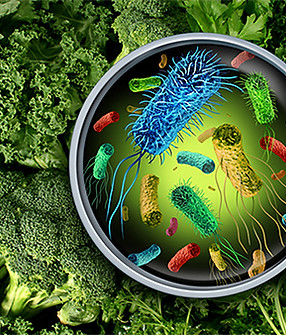
FOODBORNE VIRAL
INFECTIONS
Viruses are one of the most common causes of food poisoning. The symptoms of these infections vary depending on the virus involved.
* Hepatitis A is a virus that affects the liver for a few weeks up to several months. Symptoms may include yellow skin, naused, diarrhed, and vomiting. Up to 15% of infected individuals experience recurrent illness within 6 months of infection.
* Noro-virus has been reported to be responsible for outbreaks of severe
gastrointestinal illness that happen on cruise ships, but it causes disease in many situations and locations. About 20 million people in the U.S. become sick from these highly contagious viruses every year.
* Rotavirus causes severe, watery diarrhea that can lead to dehydration. Anyone can get rotavirus, but the illness occurs most often in babies and young children.
Rotaviruses and noro-viruses are responsible for many (but not all) cases of viral gastroenteritis, which causes inflammation of the stomach and intestines. People may use the terms "stomach virus" or "stomach flu" to refer to viral gastroenteritis, which causes nausea, vomiting, diarrhea, and abdominal pain.
It's not pleasant to think about it, but foodborne viral illnesses are transmitted via the fecal-oral route.
This means that a person gets the virus by ingesting virus particles that were shed through the feces of an infected person. Someone with this type of virus who doesn't wash their hands after using the restroom can transfer the virus to others by shaking hands, preparing food, or touching hard surfaces. Contaminated water is another potential source of infection.
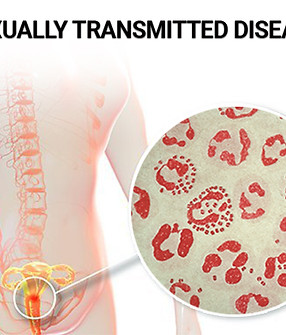
SEXUALLY TRANSMITTED
VIRAL INFECTIONS
Sexually transmitted viral infections spread through contact with bodily fluids. Some sexually transmitted infections can also be transmitted via the blood (blood-borne transmission).
* Human papillomavirus (HPV) is the most common sexually-transmitted infection in the US. There are many different types of HPV.
Some cause genital warts while others increase the risk of cervical cancer.
Vaccination can protect against cancer-causing strains of HPV.
* Hepatitis B is a virus that causes inflammation in the liver.
It's transmitted through contaminated blood and bodily fluids. Some people with the virus don't have any symptoms while others feel like they have the flu. The hepatitisB vaccine is more than 90% effective at preventing infection
* Genital herpes is a common sexually-transmitted infection caused by herpes simplex virus-2 (HSV-2). Herpes simplex virus-1 (HSV-1), the virus responsible for cold sores, can also sometimes cause genital herpes. There's no cure for genital herpes.
Painful sores often recur during outbreaks.
Antiviral medications can decrease both the
number and length of outbreaks.
* Human immunodeficiency virus (HIV) is a virus that affects certain types of T cells of the immune system. Progression of the infection decreases the body's ability to fight disease and infection, leading to acquired immune deficiency syndrome (AIDS). HIV is transmitted by coming into contact with blood or bodily fluids of an infected person.
People can reduce the risk of getting a sexually-transmitted viral infection by abstaining from sex or only having sex while in a monogamous relationship with someone who does not have a sexually-transmitted infection. Using a condom decreases, but doesn't entirely eliminate, the risk of acquiring a sexually-transmitted infection. Minimizing the number of sexual partners and avoiding intravenous drug use are other ways to reduce the risk of acquiring sexually-transmitted and blood borne viral infections.

BACTERIAL VS VIRUS
Viruses and Bacteria are two types of potentially disease-causing (pathogenic) particles. Viruses are much smaller than bacteria and can't reproduce without the assistance of a host. Bacteria are capable of reproducing on their own. The symptoms of viral and bacterial illnesses are sometimes similar. A doctor can determine the underlying cause of an illness based on the patient's symptoms and other factors. Lab tests may help clarify whether an illness is due to a virus, bacteria, or other infectious agent or disease process.

ARTHRITIS
Arthritis is the swelling and tenderness of one or more of your joints. The main symptoms of arthritis are joint pain and stiffness, which typically worsen with age. The most common types of arthritis are osteoarthritis and rheumatoid arthritis.
Osteoarthritis causes cartilage - the hard, slippery tissue that covers the ends of bones where they form a joint - to break down. Rheumatoid arthritis is a disease in which the immune system attacks the joints, beginning with the lining of joints. The most common signs and symptoms of arthritis involve the joints. Depending on the type of arthritis you have, your signs and symptoms may include:
* Pain
* Stiffness
* Swelling
* Redness
* Decreased range of motion
The two main types of arthritis - osteoarthritis and rheumatoid arthritis - damage joints in differ
ways.

OSTEOARTHRITIS
The most common type of arthritis, osteoarthritis involves wear-and-tear damage to your joint's cartilage - the hard, slick coating on the ends of bones where they form a joint. Cartilage cushions the ends of the bones and allows nearly frictionless
joint motion, but enough damage can result in bone grinding directly on bone, which causes pain and restricted movement. This wear and tear can occur over many years, or it can be hastened by a joint injury or infection.
Osteoarthritis also affects the entire joint. It causes changes in the bones and deterioration of the connective tissues that attach muscle to bone and hold the joint together. It also causes inflammation of the joint lining








